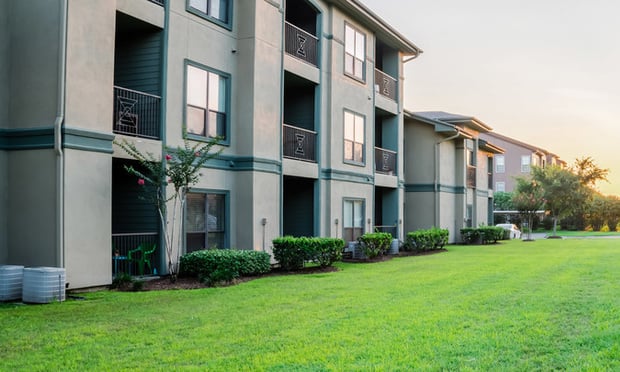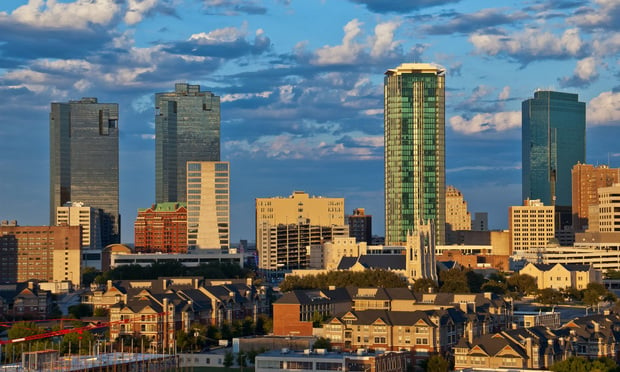ARLINGTON, TX-Mention "industrial submarkets" and "Dallas-Fort Worth," and what might come to mind is South Dallas. Or Alliance. Or DFW Airport.
What's interesting is that one of the area's older industrial submarket – known as Great Southwest – may not be top-of-mind. But experts tell GlobeSt.com that this 7,000-acre, approximately 98,000-square-foot industrial center is starting to make a comeback after many years of sluggish growth and high vacancy.
Founded in the mid-1950s by Texas commercial real estate developer Angus G. Wynne Jr., the Great Southwest master-planned business park sprawls across Arlington and Grand Prairie, and pushes further west into parts of Fort Worth. The acreage is bounded by US 183 to the north and Interstate 20 to the south and is bisected by SH 360. As such, it's relatively easy to travel to either Dallas or Fort Worth from the GSW, as it's centrally located. "It may be an old park, but it's important and pivotal to the region as a whole because it's a great location. It's right in the middle," explains Transwestern vice president Jim Hazard.
Furthermore, "GSW is equidistant from two intermodals, Alliance (Intermodal Facility) and (South) Dallas (Intermodal)," says Brad Struck with Transwestern. "If you locate there, you can rely on the intermodals."
Despite its location in north central Texas, however, the Great Southwest submarket struggled during much of the 1990s and 2000s, and well into the Great Recession. Hazard, who serves as president of the Great Southwest Industrial District Association, says one main reason why the area struggled so much was due to the Arlington Independent School District's failure to pass the Triple Freeport Inventory Tax Exemption, which allows schools, cities and counties to exempt business inventory from taxes if goods are shipped out of state. "That was also around the time of the dot-com crash," Hazard says. "If you're a business that ships a lot of goods and can't get that exemption, it makes sense to relocate." The result of both non-passage and economic bust was a vacancy during the mid-2000s of around 20%.
In recent years, however, that vacancy has dropped. These days, vacancy ranges from 6.9% to 8%, depending on the research you read. Part of the reason was due to the Arlington ISD's final passage of the Triple Freeport Exemption. Another reason is infrastructure. Specifically. the SH 161 extension, linking Interstate 20 and SH 183 and providing a north-south thoroughfare through the eastern half of the GSW acreage.
"Certain buildings and land that didn't have freeway frontage or immediate access to the freeways now do," comments Bradford Commercial Real Estate's Michael Spain. "It changed the landscape of that submarket, and led to Restoration Hardware's build-to-suit (in Grand Prairie)." Also adding to the submarket's popularity, Hazard says, is SH 360's widening through Arlington. "That slowly improves the distribution aspect of the park," he says.
Spain says he also thinks the SH 161 extension led to Weeks Robinson's June 2013 purchase of 75 acres in Grand Prairie for the speculative development of the 1.4-million-square-foot Logistics Crossing. Furthermore, "We just sold 24 acres on Post and Paddock (in Arlington) to Crow Holdings; they're building 400,000 square feet of speculative space there," Spain says. Spain and Hazard also report that Oakmont Industrial is also eyeing GSW land on which to build.
This is good news, in a sense. But the interest also presents a challenge. Unlike other areas in the Dallas-Fort Worth area, Great Southwest is landlocked, meaning that, more demand is not going to automatically mean more supply. "There is land available, but you're getting to the point in which any developer will have to push out of the traditional boundaries where the park is located," Stark observes. "Companies may have to go off the beaten path for that development." Hazard adds that, while there are still pockets throughout the region for smaller users – 20,000-square-foot to 50,000-square-foot users – "if you're looking for big box, those sites are exhausted."
It does seem to be the smaller users who are showing interest in Great Southwest. "There's a lot of velocity in that size range," Stark says. "They're submarket-specific and they're interested in Great Southwest. We're seeing a lot of smaller companies and industries prosper there."
Spain says those boundaries have been stretched, thanks to the SH 161 extension. "We were becoming landlocked because RiverPark was the latest, large development which came out before the downturn," he says. "That took up the last of the land up there, but 161 opened new areas. Suddenly there are parcels of land that can be used for industrial that didn't make sense before."
Regardless of where future developers and tenants end up in this part of the Dallas-Fort Worth Metroplex, the experts agree that, after years of being on the wrong end of a downward trend, the Great Southwest submarket is populat once again. "We're seeing more interest in it now than at any point during my 12-year career," Spain says.
This also means that tenants have to be more savvy when it comes to leasing space in that submarket. "The tenant has to react more quickly than in the past," Stark notes. Adds Hazard: "The market is rapidly moving toward becoming a landlord market. By delaying decisions, the rates and terms will be more favorable to the landlord."
Want to continue reading?
Become a Free ALM Digital Reader.
Once you are an ALM Digital Member, you’ll receive:
- Breaking commercial real estate news and analysis, on-site and via our newsletters and custom alerts
- Educational webcasts, white papers, and ebooks from industry thought leaders
- Critical coverage of the property casualty insurance and financial advisory markets on our other ALM sites, PropertyCasualty360 and ThinkAdvisor
Already have an account? Sign In Now
*May exclude premium content© 2024 ALM Global, LLC, All Rights Reserved. Request academic re-use from www.copyright.com. All other uses, submit a request to [email protected]. For more information visit Asset & Logo Licensing.








